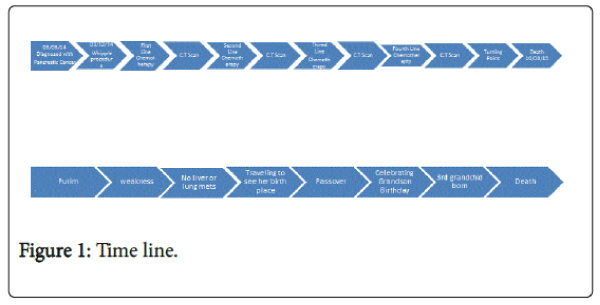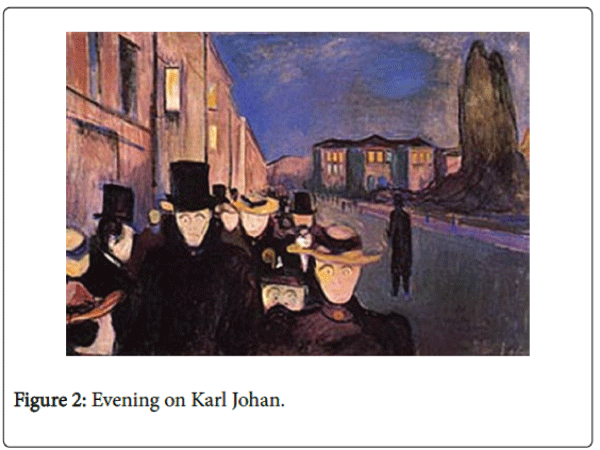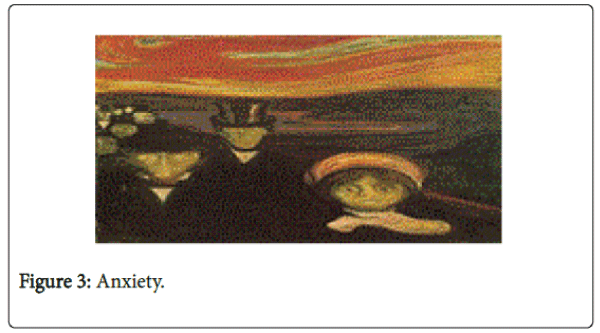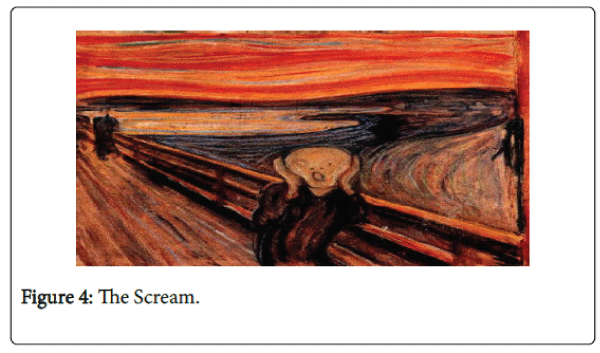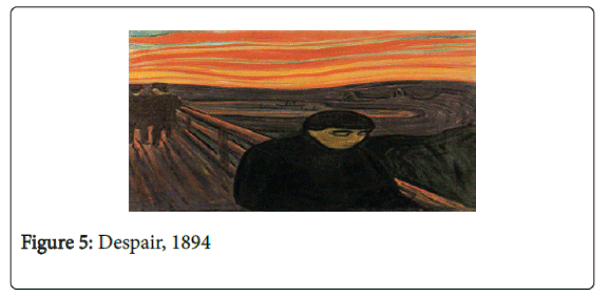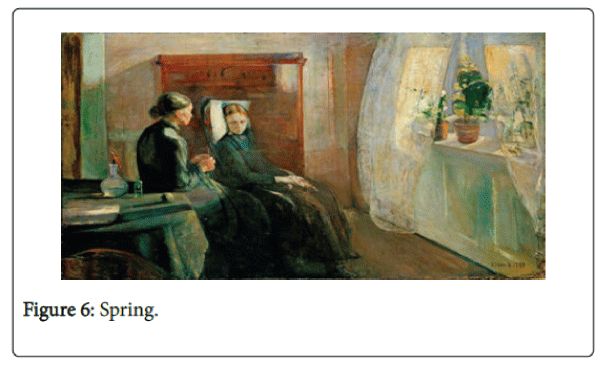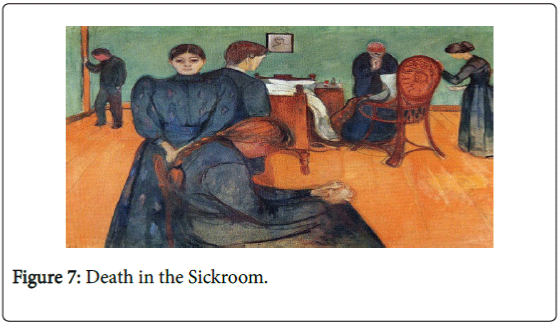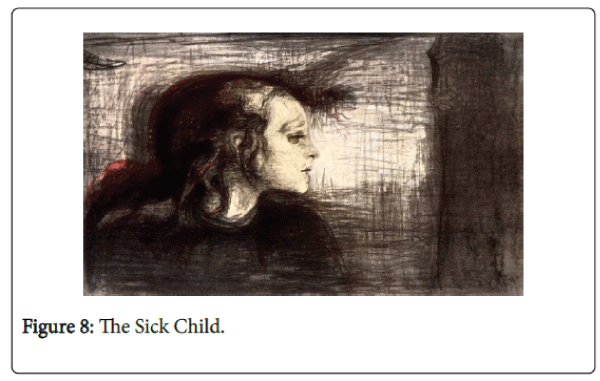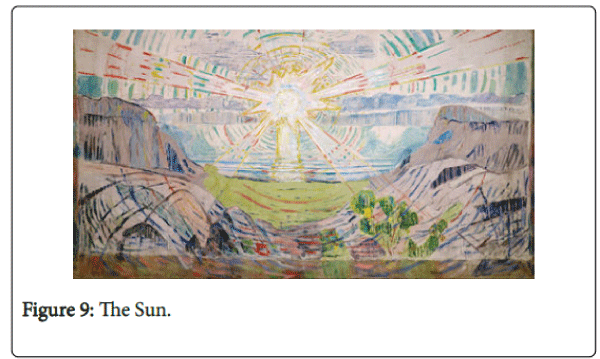Case Report Open Access
Sarahs Journey through the End of Life: A Literary and Pictorial Analysis
Anat Romem1, Jorunn Opstad Carmel1 and Chaya Greenberger2*
1Shaare Zedek Medical Center, The Palliative Care Unit and Lev Academic Center, Campus Tal, School of life and Health Sciences, Jerusalem, Israel
2Faculty of Life and Health Sciences, Jerusalem College of Technology, Jerusalem, Israel
- *Corresponding Author:
- Chaya Greenberger, PhD
Dean, Faculty of Life and Health Sciences, Jerusalem College of Technology
Mitzpe Nevo 92/2, Maale Adumim, Israel
Tel: 72528119420
E-mail: greenber@jct.ac.il
Received date: May 19, 2016; Accepted date: June 20, 2016; Published date: June 24, 2016
Citation: Romem A, Carmel JO, Greenberger C (2016) Sarah’s Journey through the End of Life: A Literary and Pictorial Analysis. J Palliat Care Med 6:272. doi:10.4172/2165-7386.1000272
Copyright: © 2016 Romem A, et al. This is an open-access article distributed under the terms of the Creative Commons Attribution License, which permits unrestricted use, distribution, and reproduction in any medium, provided the original author and source are credited.
Visit for more related articles at Journal of Palliative Care & Medicine
Abstract
Coming to grips with End of Life (EOL) is a stressful and emotionally draining experience. Coping with the circumstances is extremely challenging both for patient and caregiver. The ability to express one’s thoughts and feelings is paramount to a successful and meaningful closure. Often, unfortunately, this goal eludes both the individual and his or her caregivers. Alternatives to verbal modes of communication, such as diarizing, need to therefore be explored.
The purpose of this report is to present an abridged version of excerpts from a diary written by one of our patients, with an accompanying pictorial interpretation of these excerpts chosen from the paintings of Edvard Munch. Munch is an early 20th century Norwegian painter, some of whose major themes relate to disease, emotional turmoil, death, and separation. They reflect a life overwhelmed by recurrent family tragedy and the artist’s attempt to relieve his profound sadness and grief through an artistic medium. With the family’s permission, our palliative care team uses this diary and parallel expressions from selected paintings by Munch in its staff training seminars. Group reflection on the writings and paintings has proved to be a successful avenue for enabling our staff to better understand the journey through end of life and to empower the facilitation of patients’ therapeutic description of their unique journeys. It is our hope that the report will inspire additional professionals to utilize similar techniques for staff development in their care units.
Keywords
Patient; Diary; Palliative care; End of life; Edvard munch
Background
Sara, a 61-year-old deeply religious woman of the Jewish faith, was diagnosed with metastatic pancreatic cancer on March 3, 2014. Two weeks later she was scheduled for a Whipple procedure in the department of surgery.
Chemotherapy, which consisted of four courses over a period of 49 weeks with a CT scan to be performed after each course, was initiated on May 5, 2014.
During this period (Figure 1) Sarah lived simultaneously on two planes of existence, experiencing a so-called “normative” life marked by holidays, travel, and family milestones parallel to the events transpiring all the while during her cancer’s progression.
In a secret diary, Sarah confronted her cancer on a daily basis, giving expression to both the physical and emotional hardships stemming from her terminal illness. The journey ended in her death at home, surrounded by close family members and friends.
The diary exposes the dialectic of hope for a miraculous cure on the one hand and the bitter realization of the impending end on the other. The pictorial interpretation provided by the caregivers reflected their experience of understanding and supporting the patient through her journey.
The Diary
Fear versus hope
S: Dear Diary, those are things coming from my heart. I slept most of the day; I am tired, I am trying to find the right equation, balancing between my thoughts and a little bit of relaxation. I am balancing being miserable with being serious and steady. I think I am confused… Today I met the art therapist, I drew a few pictures: stars, birds, and a lot of question marks; it was nice. The fear is inside them.
S: Before Passover and after “the new treatment.” Bless me God that this treatment will hold and help; I am very weak, I am not able to do anything, I can only pray. My strength is my whisper.
S: What has become of my previous life? A life without fear and distress, without any doubts?
S: Yesterday I had a bad day; since the morning I felt very weak, headache, burning eyes, I couldn’t get out of bed, the fear and the tension are killing me. No more suffering, I don’t want to be back in the oncology unit.
S: My next appointment is scheduled for a CT scan. Please God, please; I would like you to have the best results for me; that everything will be fine. Wonderful news; no disease, I am well again… so I wish….
S: I would like to live a longer life. Even the weather is “sad,” the sky is grey and it is very cold outside. It is not doing any good for my mood. I am trying to concentrate only on the good things…. Dear God, I am begging for some hope, just a glimpse of good news. Please, God, do not leave me alone.
S: The LORD delights in those who fear him, who put their hope in his unfailing love, and as for myself I will persevere, waiting for a miracle to occur.
Donna Authers, in her book A Scared Walk [1], writes about the common fears related to dying: the dying process itself, loss of control, loss of loved ones, isolation, the unknown, meaningless (rather than meaningful) life. The possibility of newfound suffering and the unpredictable timing of death increase the overall fears.
Holtslander et al. [2] emphasizes that patients look to hope as an inner sign of self-strength and a source of courage, enabling them to better handle difficult times and situations.
Sarah is grappling for hope without being able to detach herself from the gloomy reality of her illness.
Sarah is overpowered by her fear, dampening with this fear the beauty of nature (e.g., stars and birds) which she still feels part of. She also relates, however, to a constructive fear – the fear of God – actually reverence. Trusting in His omniscience paradoxically serves to alleviate her fear as it generates hope.
The process of dying
S: Surgery scheduled for the 03/12/2014; it is night time now…
S: My dear diary, my best friend, you will be my closest friend in the coming months.
S: In our world there is a lot of suffering and pain; I was introduced to this horrifying situation last year when I was hospitalized for a few weeks. Thank you Father for your mercy, for everything you are doing for me.
S: We do not know God’s workings. Maybe soon I will be able to better understand my situation. In any case, all that is done in HIS wishes is for the best.
S: Today my chaplain was supposed to come; I waited but she didn’t arrive. I was very disappointed, frustrated and upset.
Sarah depicts the dying process she is experiencing as common to her mortal counterparts in the world. She, on the one hand, accepts them as “for the best” as they are God’s will, but [on the other hand] desperately wants to understand their purpose, seeing her chaplain as a potential catalyst for obtaining insight.
Family
S: My children are wonderful, their kindness and love is like falling water. Our relations are very strong and stable. Sadness and sorrow have dominated our lives recently. I am tired and weak from my illness, and it is tearing me apart physically and emotionally. I would like to know about my grandchildren more. What they would like to have? What are their thoughts? I am not able to talk with them. The disease is surrounding me, consuming my last remaining strength.
Sarah feels enveloped with the love of her family, yet paradoxically, as she is also enveloped by her disease, she is distant from them and unable to fully reap the benefits of their love.
Isolation
S: Dark here; I am alone, most of the time I am alone, friends and family are coming, but my soul is deserted. I wish I was more open to others and social. My dear diary, my best friend. I am sad, the music on the street is very loud, and everyone is celebrating Purim. I am alone on the holidays and at the weekends. I am alone most of the time; the silence is closing on me, my joy and happiness gone away a long time ago. I would like to run away; it is like being a bird without wings.
S: My dear diary, it’s me. I am writing from the other world, the world of the malignant disease, the rest of the world is not here, somewhere else… In this place I am fighting for health and sanity
Sarah mourns her previous social attachments; she feels isolated despite the physical presence of others as they are outside her realm of experience as she is outside theirs. Her wings are clipped as she realizes the loss of opportunities the future might have held out for her. God’s presence is all the more critical.
Loss of control
S: I am fighting for my life, for my sanity, no one can understand this situation. I would like to feel better, to celebrate the high holidays with their full meaning and beauty. I am getting nervous from everything, maybe I should take my clonex. What will happen? What will be the results, what kind of feeling do I have? Am I already dead?
Sarah expresses awareness of lack of control and seeks ways to retrieve it, equating “no” control with “no” life.
Loss of loved ones
S: My dear exhausted diary, today we traveled home[to], my home. My childhood was very happy; I lived in nature, a clean and honest world. My parents were hard-working farmers, they loved me and took care of me, but we lived a life without faith, life without holiness, without knowing God – this is the real human purpose. I lost those memories years ago, now it is my turn to die.
Sarah cyclically intertwines the past loss of her family and memories of her family with the impending loss of her own life. Taking broader stock of her life, she also incorporates her deprivation of a religious upbringing as an additional loss which can never be retrieved.
Meaningful life to meaningless life
S: We came through a very difficult year, from grandpa and grandma who supported and spoiled the grandchildren, we came to be two old people. God, we are depending on you, you alone.
S: The kids are helping, like angels, but the trail is so hard.
S: Today I am in bed like a couch potato, sleeping, eating and complaining continuously; my stomach is hurting, nothing to talk about. End.
Sarah relates to the meaningless of a life of suffering and inactivity in light of the meaningful life of the past. Perhaps she is intimating that, in her mind, “meaninglessness” is synonymous with death.
Acceptance
S: It is so comforting to put my head on your [God’s] shoulder.
Beloved steady shoulder.
I am longing for its warmth, it is there for me.
Silence taking over, grasping me and seeping into my soul.
It is so good to be together.
Sarah’s diary was able to relay to us, the readers, the sensation of her imminent death as she is able to make peace with it, being all the while in God’s presence.
The last page of her diary ends with a poem:
After thirty years I met my soul
Happy, I did not recognize her
Placed in the corner, dusty
I helped her to stand, comforting her
How good it is to be together
In this passage, Sarah reflects back to the age (30) when she “met her soul,” who had been until that point forlorn, by embracing religion.
She consoles her soul for the years of neglect and non-recognition. Sarah seems to be experiencing closure as she speaks in both past and future tenses. In the past, she found her soul, but now anticipates a more intimate union as she anticipates meeting death and the afterlife.
Despite the horrific illness, she finds the strength to comfort her soul for lost time as she had done in the initial union, in anticipation of their ultimate reunion (in the afterlife).
Conclusion
Cancer patients face each day with uncertainty, the possibility of newfound suffering and the unpredictable timing of death [3]. This report comprises a qualitative biographical exploration of the end-oflife experience as portrayed in Sarah’s secret diary, along with a pictorial interpretation via Munch’s selected paintings.
What Sarah wrote during endless sleepless nights reflects her physical weakness, pain and emotional chaos, but also her hopes for remaining alive and finding meaning in her remaining life or in her afterlife, generated by her deep religious faith. As she herself writes: “Betroth with God and recognize God, I am finding the path to goodness, I am finding comfort.”
As the palliative care team, we had the privilege and responsibility to care for her in her lifetime and gleaned from her diary important insights which will be instrumental in easing the way for others in their end-of-life journey.
Pictorial interpretation of selected excerpts of Sarah’s diary through selected paintings by Edvard Munch:
There is a “surface” sense of serenity in this painting, sunset on the city (Figure 2). The undercurrent of the horrors of life, however, finds expression in the sad, faceless crowd. Each one is enveloped in his own turmoil which no one escapes. The man in the background views the last rays of a setting sun, perhaps mourning his own lost opportunities as the sun of life sets on him as on the others.
S: In our world, there is a lot of suffering and pain. I was introduced to this horrifying situation last year when I was hospitalized for a few weeks... I would like to live a longer life. Even the weather is “sad,” the sky is grey and it is very cold outside.
Sarah relates to the universality of suffering but also gives expression to her own personal loss.
The faces in the crowd appear anxious (Figure 3), each moving away from the sun, into the darkness, perhaps toward death. Some are further away, but all will inevitably get there as they are confined by the bridge.
S: …What has become of my previous life? A life without fear and distress, without any doubts? ...Yesterday I had a bad day, since the morning I felt very weak, headache, burning eyes, I couldn’t get out of bed, the fear and the tension are killing me. No more suffering, I don’t want to be back in the oncology unit.
The painting portrays an acute sensation (Figure 4). The individual closes his ears to avoid hearing the fearful screams coming from within; he is alone, isolated, with other individuals way behind, not in his world.
S: …The silence is closing on me, my joy and happiness gone away a long time ago, I would like to run away, it is like being a bird without wings… I am fighting for my life, for my sanity, no one can understand this situation…
The individual in the forefront of the painting seems past the acute stage of turmoil from within (Figure 5). He is alone, isolated from the two distant figures that appear to be interacting with each other in an animated fashion.
He has already turned away from the sunlight.
S:…I am in bed like a couch potato, sleeping, eating and complaining continuously; my stomach is hurting, nothing to talk about. End.
This painting poignantly contrasts the spring-like renewal (Figure 6) shining in from the window with the death of the woman unfolding within [4-6].
S: I am tired and weak from my illness, and it is tearing me apart physically and emotionally… I am writing from the other world, the world of the malignant disease, the rest of the world is not here, somewhere else…
The bed in this painting is empty, symbolizing that family members continue to mourn long after the death of a loved one (Figure 7). Sarah revisits and re-experiences the loss of her parents long after they are gone, triggered within the context of her own impending death.
S: My childhood was very happy. I lived in nature, a clean and honest world. My parents were hard-working farmers, they loved me and took care of me... I lost those memories years ago, now it is my turn to die.
In this painting, there is only one lone figure facing away, alone with her illness (Figure 8). As if death is already present, the face shows misery and the dark colors reveal a disheartened state [7].
S: Dark here, I am alone, most of the time I am alone, friends and family are coming, but my soul is deserted. I wish I was more open to others and social… I am alone most of the time, the silence is closing on me, my joy and happiness gone away a long time ago.
Although Sarah is not a child in chronological terms, she perceives herself as “childlike” in light of the missed experiences of a future life which she could have had.
In this painting (Figure 9), the sunrays are the water of the ocean, light green and blue, happy, vivid formations; it is a vivid expression of optimism. The sun is shining from heaven, reaching out to all infinity [8]. There is perhaps an element of religious faith that beyond the horizon there is to be found the rhyme and reason of life.
S: ...It is so comforting to put my head on your [God’s] shoulder… Beloved steady shoulder...
We do not know God’s workings. Maybe soon I will be able to better understand my situation. In any case, all that is done in HIS wishes iss for the best.
References
- Authers DA (2008) A Sacred Walk: Dispelling the Fear of Death and Caring for the Dying. Leichhardt, NSW: A&A Book Publishing.
- Holtslander LF, Duggleby W, Williams AM, Wright KE (2005) The experience of hope for informal caregivers of palliative patients. J Palliat Care 21: 285-291.
- Chabner BA (1997) Cancer: a personal journey. Notes from the edge. The diary of Peter J. Morgan, MD. The Oncologist 2: 206-207.
- Cordulack SW (2002) Edvard Munch and the Physiology of Symbolism. Madison, NJ: Fairleigh Dickinson University Press.
- Falconer M (2003) Contemporary art, London, in Burlington Magazine 145: 873-875.
- Henning J (2009) “Not all his inspirations were creepy.” The Wall Street Journal.
- McShine K (2006) Edvard Munch: The Modern Life of the Soul. New York: Museum of Modern Art.
- Clarke JA (2009) Becoming Edvard Munch: Influence, Anxiety and Myth. New Haven: Yale University Press.
Relevant Topics
- Caregiver Support Programs
- End of Life Care
- End-of-Life Communication
- Ethics in Palliative
- Euthanasia
- Family Caregiver
- Geriatric Care
- Holistic Care
- Home Care
- Hospice Care
- Hospice Palliative Care
- Old Age Care
- Palliative Care
- Palliative Care and Euthanasia
- Palliative Care Drugs
- Palliative Care in Oncology
- Palliative Care Medications
- Palliative Care Nursing
- Palliative Medicare
- Palliative Neurology
- Palliative Oncology
- Palliative Psychology
- Palliative Sedation
- Palliative Surgery
- Palliative Treatment
- Pediatric Palliative Care
- Volunteer Palliative Care
Recommended Journals
- Journal of Cardiac and Pulmonary Rehabilitation
- Journal of Community & Public Health Nursing
- Journal of Community & Public Health Nursing
- Journal of Health Care and Prevention
- Journal of Health Care and Prevention
- Journal of Paediatric Medicine & Surgery
- Journal of Paediatric Medicine & Surgery
- Journal of Pain & Relief
- Palliative Care & Medicine
- Journal of Pain & Relief
- Journal of Pediatric Neurological Disorders
- Neonatal and Pediatric Medicine
- Neonatal and Pediatric Medicine
- Neuroscience and Psychiatry: Open Access
- OMICS Journal of Radiology
- The Psychiatrist: Clinical and Therapeutic Journal
Article Tools
Article Usage
- Total views: 10994
- [From(publication date):
July-2016 - Aug 16, 2025] - Breakdown by view type
- HTML page views : 10123
- PDF downloads : 871

